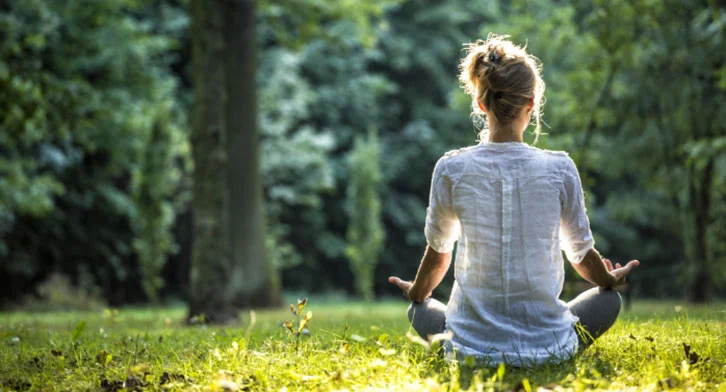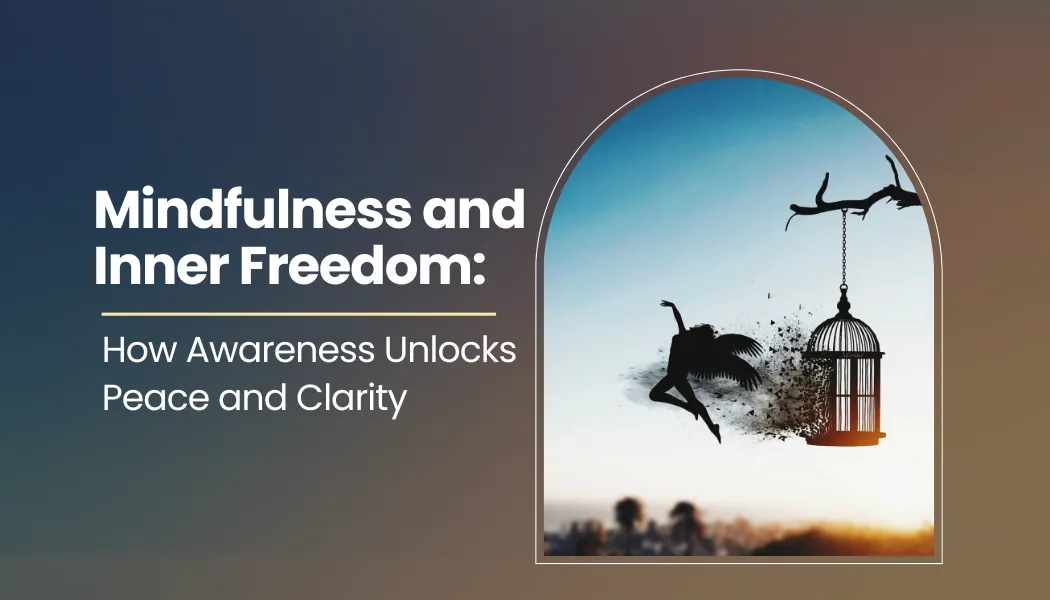In a world overflowing with distractions, obligations, and constant noise, many of us find ourselves searching for something deeper—something that brings peace, clarity, and a sense of freedom from the endless cycle of stress and worry. That “something” is often closer than we think. It does not come from the outside world but from cultivating awareness within. This is the essence of mindfulness: a practice that opens the door to inner freedom.
Mindfulness is not about escaping reality. It is about learning to meet life exactly as it is, with presence, acceptance, and clarity. Instead of being trapped in cycles of regret about the past or anxiety about the future, mindfulness allows us to rest in the present moment—the only moment where life truly unfolds. And in that presence, a profound sense of freedom begins to grow.
This article explores how mindfulness can guide us to inner freedom. We will journey through its roots, its practical applications, the science that supports it, and the transformative ways it reshapes the mind and heart. Along the way, we will uncover how mindfulness can help us break free from limiting patterns, open up new possibilities for growth, and ultimately lead to a life of greater peace, resilience, and joy.
Table of contents
- The Meaning of Inner Freedom
- Roots of Mindfulness: Ancient Wisdom, Modern Relevance
- The Science of Mindfulness: Evidence for Freedom
- How Mindfulness Cultivates Inner Freedom
- Practical Ways to Practice Mindfulness
- Stories of Transformation
- Mindfulness and Compassion: Two Wings of Freedom
- Challenges on the Path
- A Lifelong Path
- Conclusion: The Door Is Always Open
The Meaning of Inner Freedom
Before diving into mindfulness, it’s important to reflect on what we mean by inner freedom. Outer freedom—freedom of movement, choice, and opportunity—is shaped by external circumstances. Inner freedom, however, is about the state of our mind and heart.
We may live in a free society, yet still feel imprisoned by self-doubt, fear, cravings, or anger. We may have all the opportunities in the world but remain shackled to unhealthy habits or destructive thought patterns. Inner freedom is the ability to live without being dominated by these forces. It is the capacity to act with wisdom instead of reacting with conditioning.
When we speak of mindfulness as a path to inner freedom, we are talking about cultivating a way of living that frees us from being at the mercy of automatic thoughts, emotions, and impulses. It is about finding spaciousness in the mind and ease in the heart.
Roots of Mindfulness: Ancient Wisdom, Modern Relevance
Mindfulness is not a new trend, though it has gained widespread popularity in recent decades. Its roots stretch back thousands of years, most prominently within Buddhist traditions, where mindfulness (known as sati in Pali) is considered central to the path of liberation.
The Buddha taught mindfulness as part of the Eightfold Path, a way of ethical and mental cultivation leading to freedom from suffering. But mindfulness is not exclusive to Buddhism. Similar practices of presence and awareness appear in many spiritual traditions—from Christian contemplative prayer to Sufi meditation to Hindu yoga.
What is remarkable is how these ancient teachings resonate deeply with our modern struggles. The challenges of distraction, overthinking, and emotional turmoil are not new, but the pace and scale of today’s world amplify them. Mindfulness offers timeless tools for navigating these challenges, making it profoundly relevant in the 21st century.
The Science of Mindfulness: Evidence for Freedom
In recent decades, scientific research has validated what contemplatives have known for centuries: mindfulness changes the brain, the body, and the way we experience life.

- Stress reduction: Mindfulness practices lower cortisol levels and activate the relaxation response, helping us respond to stress with more calm and less reactivity.
- Emotional regulation: Brain imaging studies show that mindfulness strengthens the prefrontal cortex (responsible for self-control) while calming the amygdala (the brain’s alarm center).
- Freedom from rumination: By training attention, mindfulness reduces repetitive negative thinking patterns, freeing us from cycles of worry and regret.
- Improved relationships: Mindful awareness enhances empathy, listening, and compassion, leading to healthier connections with others.
- Greater resilience: Mindfulness builds mental flexibility, allowing us to adapt to challenges instead of being overwhelmed by them.
In essence, mindfulness does not just bring momentary calm—it creates lasting structural and functional changes in the mind that expand our capacity for freedom.
How Mindfulness Cultivates Inner Freedom
Let us now explore how mindfulness directly leads us toward inner freedom, step by step.
1. Freedom from Automatic Pilot
Many of us live much of our lives on autopilot—going through routines, scrolling through screens, or reacting to situations without real awareness. This lack of presence keeps us locked in repetitive habits.
Mindfulness interrupts autopilot. By bringing attention to the breath, the body, or the sensations of the moment, we begin to notice what is happening as it unfolds. This awareness creates choice. Instead of reacting automatically, we can respond consciously. That simple shift is the seed of freedom.
2. Freedom from Overthinking
The mind is like a storyteller that never stops talking. Left unchecked, it spins tales of past regrets and imagined futures, often filling us with anxiety. Mindfulness does not silence the mind but teaches us to observe thoughts as passing events, not absolute truths.
When we realize that we are not our thoughts but the awareness behind them, we loosen their grip. This recognition is profoundly liberating. It means we can let go of thoughts that don’t serve us and rest in the spaciousness of the present.
3. Freedom from Emotional Prison
Emotions are natural, but when they overwhelm us, they can feel like a prison. Anger can trap us in cycles of resentment, fear can freeze us, and desire can lead to endless chasing.
Mindfulness allows us to feel emotions without being consumed by them. By observing emotions as waves arising and passing, we begin to hold them with kindness rather than resistance. Over time, we learn that emotions do not define us—they are experiences we can relate to with compassion.
This creates freedom to act from wisdom rather than being driven blindly by feelings.
4. Freedom from Craving and Aversion
Much of human suffering comes from craving (wanting more) and aversion (pushing away what we dislike). These forces drive restlessness, dissatisfaction, and conflict.
Through mindfulness, we start to see these patterns clearly. When craving arises, we notice the pull without immediately acting on it. When aversion arises, we observe the resistance without automatically fighting it. This awareness weakens their hold over us, opening space for equanimity and acceptance.
5. Freedom to Live Fully in the Present
Perhaps the greatest gift of mindfulness is the ability to live here and now. Freedom is not just the absence of bondage; it is the presence of joy, wonder, and aliveness in each moment.
When we are mindful, we taste food more vividly, listen more deeply, and connect more authentically. We realize that life is not waiting for us in some distant future—it is happening right now. And in embracing the present, we discover a freedom that is both simple and profound.
Practical Ways to Practice Mindfulness
The path to inner freedom is not built overnight. It is cultivated through practice—gentle, consistent, and intentional. Here are some practical ways to integrate mindfulness into daily life:
Formal Practices
- Mindful breathing: Spend 5–10 minutes focusing on the natural rhythm of your breath, returning attention whenever the mind wanders.
- Body scan meditation: Slowly bring awareness through each part of the body, noticing sensations with openness.
- Loving-kindness meditation: Cultivate compassion by silently repeating phrases of goodwill for yourself and others.
- Mindful walking: Walk slowly, paying attention to each step, the sensations in your feet, and the rhythm of your movement.
Informal Practices
- Mindful eating: Eat without distractions, savoring each bite.
- Mindful listening: When someone speaks, give them your full attention without planning your response.
- Mindful pauses: Throughout the day, pause for a few breaths before reacting to situations.
These practices gradually rewire the mind, building the foundations of inner freedom.
Stories of Transformation
To see how mindfulness brings inner freedom, it helps to hear real-life stories:
- Anna’s Story: A busy executive, Anna felt imprisoned by stress and anxiety. Through daily mindfulness meditation, she learned to step back from racing thoughts. Over time, her panic attacks subsided, and she began to navigate her work with calm presence. For her, mindfulness unlocked freedom from fear.
- Ravi’s Story: A college student, Ravi struggled with anger and frustration. Practicing mindful breathing helped him notice the rise of anger before it exploded. By observing it with curiosity, he stopped lashing out impulsively. Mindfulness gave him freedom from destructive emotions.
- Maria’s Story: A retiree, Maria found herself restless and dissatisfied, always wanting something more. Through mindful walking and gratitude practices, she discovered contentment in simple daily experiences. She calls it “the freedom of enough.”
These stories illustrate that mindfulness is not abstract—it is a living practice that changes lives.
Mindfulness and Compassion: Two Wings of Freedom
True inner freedom is not just about personal peace—it is also about how we relate to others. Mindfulness naturally cultivates compassion, because as we become aware of our own struggles, we develop empathy for the struggles of others.

Compassion expands freedom. It frees us from the prison of self-centeredness, opening our hearts to connection and love. Together, mindfulness and compassion are like two wings of a bird, carrying us toward liberation.
Challenges on the Path
The journey is not always easy. Mindfulness practice often reveals uncomfortable truths about ourselves. We may resist sitting still or become discouraged by a restless mind. But these challenges are part of the process.
Freedom does not come by avoiding discomfort but by learning to meet it with awareness and acceptance. Every time we return to the breath, every time we notice without judgment, we are strengthening the muscle of freedom.
A Lifelong Path
Mindfulness is not a quick fix but a lifelong path. Inner freedom unfolds gradually, like a flower opening its petals. There will be moments of clarity and moments of struggle, but with persistence, the direction is always toward greater spaciousness, peace, and joy.
The beauty of this path is that it does not require us to change who we are. It simply invites us to wake up to who we already are—aware, capable, and free.
Conclusion: The Door Is Always Open
Mindfulness as a path to inner freedom is both ancient and timeless. It does not promise a life without challenges but offers a way to meet life with clarity, resilience, and compassion.
Inner freedom is not about controlling the world but about liberating ourselves from the chains of reactivity, overthinking, and craving. It is about finding peace in the present, wisdom in awareness, and joy in being alive.
The good news is that this freedom is available to everyone, regardless of circumstances. All it takes is the willingness to pause, breathe, and notice. The door to inner freedom is always open—the key is mindfulness.
